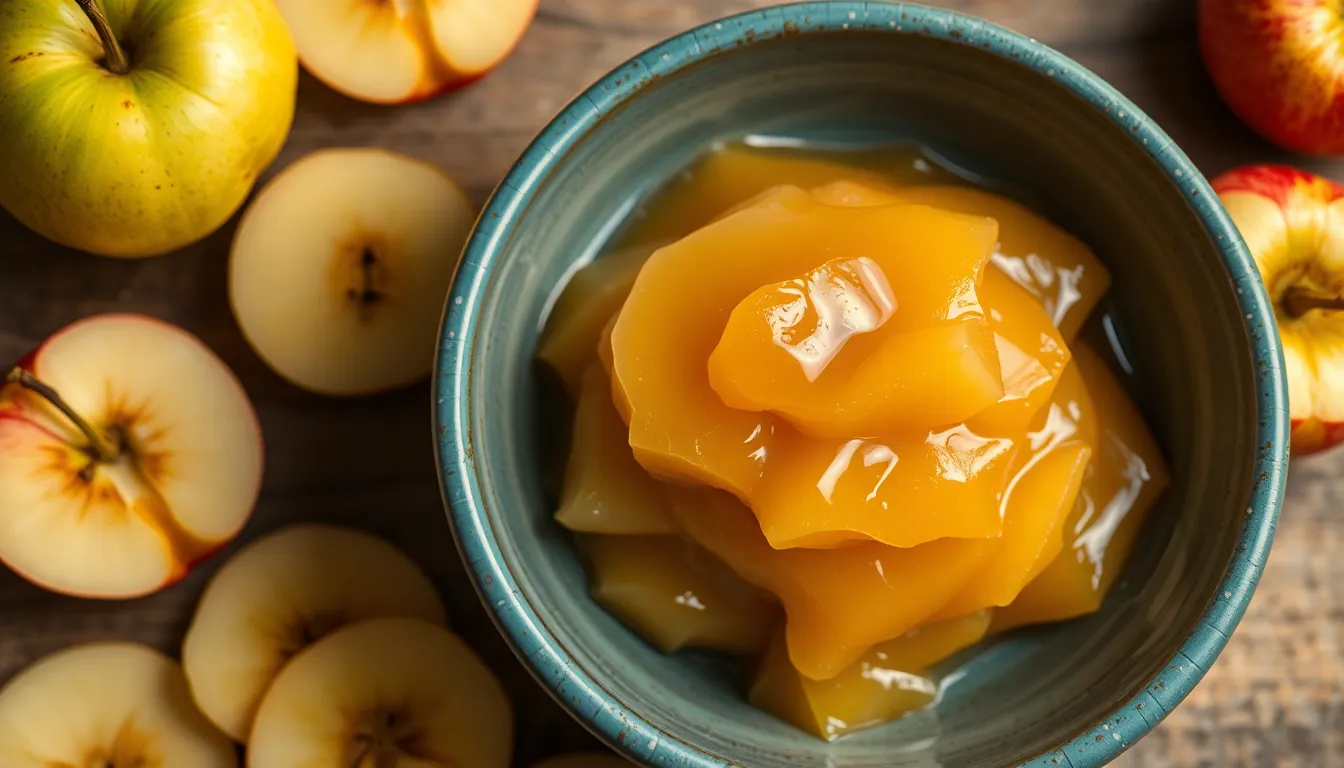How to Dehydrate Applesauce: A Unique Treat
Dehydrating applesauce is an innovative way to prolong its shelf life while preserving its delightful flavor. Not only does this method offer nutritional benefits, but it also allows for versatility in recipes and can be a fun addition to your pantry. Imagine enjoying the tangy-sweet taste of applesauce in a crispy form, perfect for snacking or adding to various dishes. In this post, we will explore the art of dehydrating applesauce, providing you with all the tips and tricks you need to embark on this culinary adventure.
Understanding Dehydration
The process of dehydration involves the removal of moisture from food, which significantly inhibits the growth of bacteria, yeast, and molds. During dehydration, the water content of the applesauce evaporates, concentrating its flavors and sugars. This preservation method not only enhances the taste of the applesauce but also increases its nutritional density.
Here are the primary benefits of dehydrating applesauce compared to other preservation methods:
- Nutritional Preservation: Dehydrating preserves most of the vitamins and minerals found in fresh apples.
- Reduced Waste: Dehydrated applesauce can be rehydrated later, minimizing food waste.
- Versatile Usage: Dehydrated applesauce can be used in various recipes, from snacks to baked goods.
- Compact Storage: Dehydrated foods take up less space compared to their fresh counterparts.
Choosing the Right Applesauce
When it comes to dehydrating applesauce, selecting the right type is crucial. Here are some tips to help you choose:
- Homemade vs. Store-Bought: Homemade applesauce allows you to control the ingredients and flavor, while store-bought options offer convenience.
- Flavor Considerations: Decide whether you prefer smooth or chunky applesauce, as this will affect the final product.
When making homemade applesauce, consider these suggested apple varieties:
- Granny Smith: Tart and crisp, great for a tangy flavor.
- Fuji: Sweet and juicy, perfect for a sweeter applesauce.
- Honeycrisp: A well-balanced flavor that works well in both smooth and chunky applesauce.
Comparison of Applesauce Types
| Type | Flavor | Texture | Best Use |
|---|---|---|---|
| Homemade Smooth | Sweet | Silky | Snacks, Baking |
| Homemade Chunky | Tart | Chunky | Toppings, Yogurt |
| Store-bought | Varies | Varies | Quick Snacks |
Preparing Applesauce for Dehydration
Once you’ve selected the right applesauce, it’s time to prepare it for dehydration. Here’s a step-by-step guide:
If Making from Scratch
- Start by washing and peeling your apples.
- Core and slice the apples into small pieces.
- Cook the apple slices in a saucepan with a bit of water until they are tender.
- Mash or blend the cooked apples to your desired consistency.
- Add sugar or spices if desired, then allow the applesauce to cool before dehydrating.
If Using Store-Bought
- Choose a high-quality applesauce with no added preservatives.
- Pour the applesauce into a mixing bowl and stir to ensure even consistency.
- If desired, you can enhance the flavor by adding cinnamon or nutmeg.
- Allow the applesauce to sit for a few minutes before dehydrating.
Dehydrating Process
There are two main methods for dehydrating applesauce: using a dehydrator or an oven. Each method has its advantages, and we will provide step-by-step instructions for both.
Using a Dehydrator
- Temperature Settings: Set your dehydrator to 135°F (57°C).
- Timing: Spread the applesauce evenly on the dehydrator trays. Dehydrate for 6-8 hours.
- Check for Readiness: The applesauce should be dry, leathery, and no longer sticky to the touch.
- Allow it to cool before storing.
Using an Oven
- Temperature Settings: Preheat your oven to the lowest setting, usually around 140°F (60°C).
- Timing: Spread the applesauce on a lined baking sheet in a thin layer. Bake for 6-8 hours, checking frequently.
- Check for Readiness: Just like with the dehydrator, the applesauce should be dry and leathery.
- Once ready, turn off the oven and let the applesauce cool before storing.
Storing Dehydrated Applesauce
Once your applesauce is dehydrated, proper storage is essential to maintain its quality. Here are some best practices:
- Containers: Use vacuum-sealed bags or airtight jars to store dehydrated applesauce.
- Ideal Storage Conditions: Keep in a cool, dark place, away from humidity and heat sources.
When stored correctly, dehydrated applesauce can last up to 1 year. Be sure to label your containers with the date of dehydration for tracking.
Creative Ways to Use Dehydrated Applesauce
Dehydrated applesauce is incredibly versatile. Here are some fun ideas to incorporate it into your meals and snacks:
- Trail Mix: Add dehydrated applesauce pieces to nuts and seeds for a delicious trail mix.
- Baking: Use as an ingredient in cookies or muffins for added flavor and moisture.
- Smoothies and Oatmeal: Rehydrate and mix into smoothies or oatmeal for a fruity twist.
To rehydrate your applesauce, simply soak it in warm water for about 15-20 minutes, stirring occasionally until it reaches your desired consistency.
Conclusion
Dehydrating applesauce is an enjoyable and rewarding experience that offers numerous benefits. Not only can you extend the shelf life of applesauce, but you also create a unique ingredient that enhances a variety of meals and snacks. We encourage you to give it a try at home and explore the world of dehydrated foods.
Share your experiences and any creative uses for dehydrated applesauce in the comments below! We would love to hear from you.
Additional Resources
- How to Dehydrate Fruits: A Complete Guide
- Making Homemade Applesauce: Tips and Tricks
- Recommended Tools for Dehydration
Call to Action
If you enjoyed this post, don’t forget to subscribe to spicestoryteller.com for more cooking tips and delicious recipes! Also, feel free to share your own dehydrating adventures with us.




